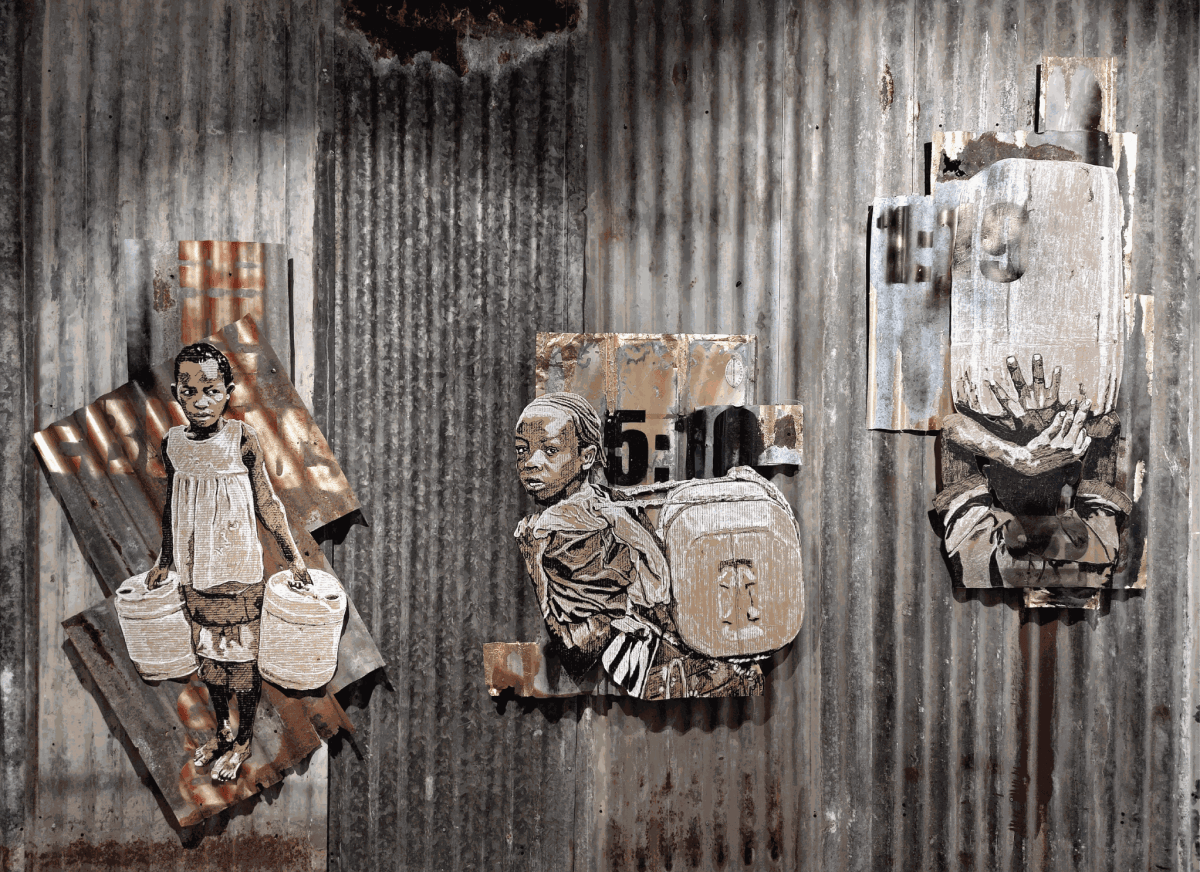António Ole Angola, b. 1951
Overview
António Ole was born in 1951 in Luanda, Angola, where he currently lives and works. During his primary school years, he lived in the village of Maiorca, near Coimbra, where his paternal grandparents were from. It was in this village that he formed his first artistic memories and began practicing drawing. After returning to Luanda, he continued his studies at Salvador Correia High School. Later, with a scholarship from the Gulf Foundation, he studied African-American culture and film at the University of California, Los Angeles, USA. He graduated from the Center for Advanced Film Studies at the American Film Institute in Los Angeles.
Ole is a multidisciplinary artist, recognized as one of the most prominent in his country, with an extensive career that began in the late 1960s. His remarkable body of work is marked by versatility across mediums, including painting, sculpture, photography, film, and installation. This multifaceted approach arose partly as a response to the popular retrospectives of mixed-media practices from the first half of the 20th century and also to the turbulence and chaos of the Angolan Civil War, which lasted intermittently from 1975 to 2002.
His early works often took the form of flat collages with surrealist inspiration from an initial period defined by vibrant colors and abstract patterns that evoke comic books and television screens. After the outbreak of the Civil War in 1975, António Ole’s work began to adopt a more realistic configuration in response to national tragedies, leading to a gradual return to photography and film production.
Ole supported the cause of independence, documenting social efforts against colonial influence in acclaimed films such as Railway Workers and Rhythm of N'Gola Rhythms, produced in 1975 and 1978, respectively.
Overall, his work is also shaped by his travels and discoveries, often inspired by the places he finds himself in at a given time. Geographic influence demonstrates his interest in rupture and ambiguity, characteristics that define a production marked by the incorporation of found objects, unique interpretations of recent post-colonial history, and depictions of contemporary issues in Angolan society.
António Ole’s first international exhibition took place in 1984 at the Museum of African American Art in Los Angeles, followed by numerous individual and group shows. Under the artistic direction of Okwui Enwezor, he exhibited at the Venice Biennale in 2015 and later represented Angola at the 2017 Biennale, where several of his films were showcased, such as Carnaval da Vitória (a short film about post-independence carnival in Angola), Rhythm of N'Gola Rhythms, On the Way to the Stars (a documentary about Angolan President Agostinho Neto), Conceição Tchiambula: One Day, One Life (a documentary on rural life in Angola), and Untitled (a poetic and ecological essay).
In 2019, to mark his 50-year career, Banco Económico in Luanda presented 50 Years – Past, Present, and Future, featuring 40 works from his career in film, photography, painting, and sculpture.
Works
-
 António Ole(un)Discardable Memories, 2000Installation (4 found objects, burlap, and wood)120 x 25 x 25 cmView more details
António Ole(un)Discardable Memories, 2000Installation (4 found objects, burlap, and wood)120 x 25 x 25 cmView more details
Exhibitions
Video






